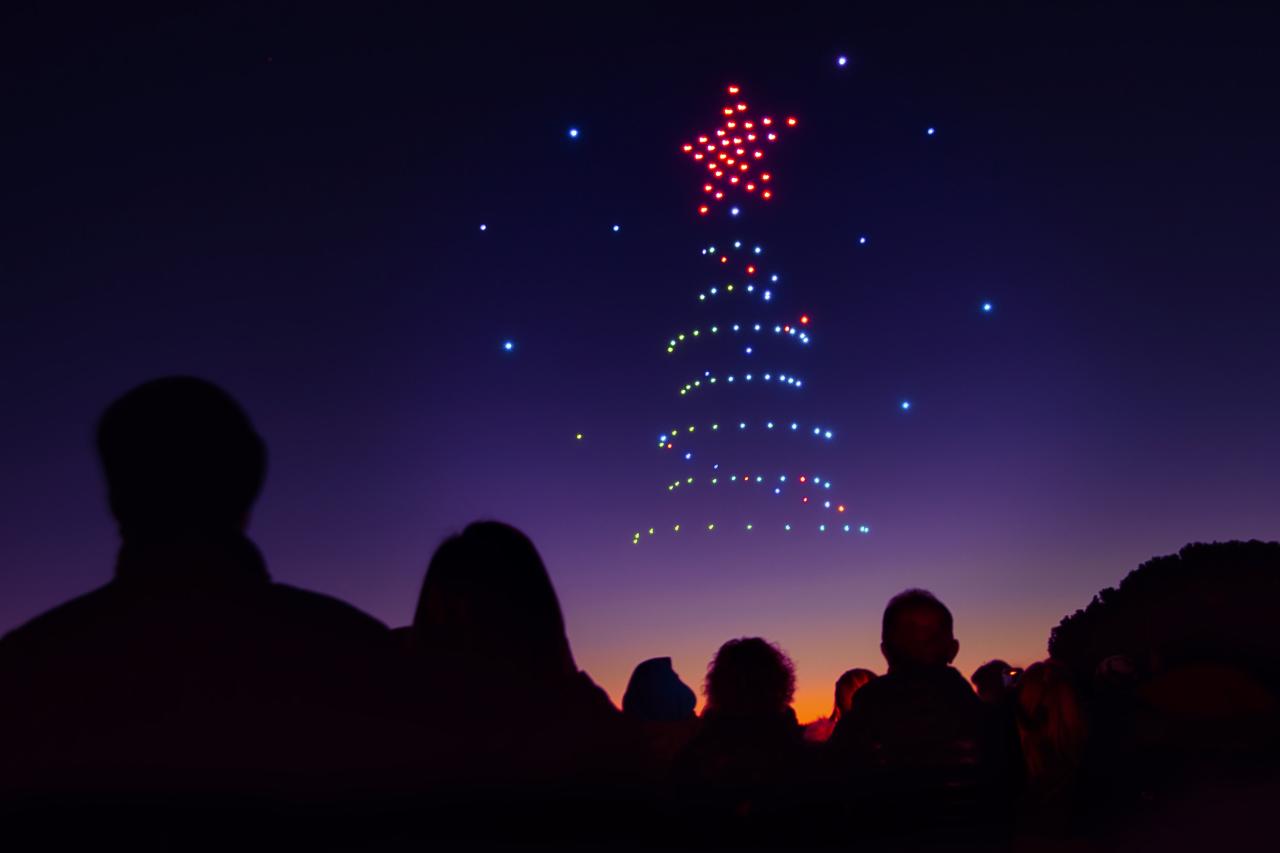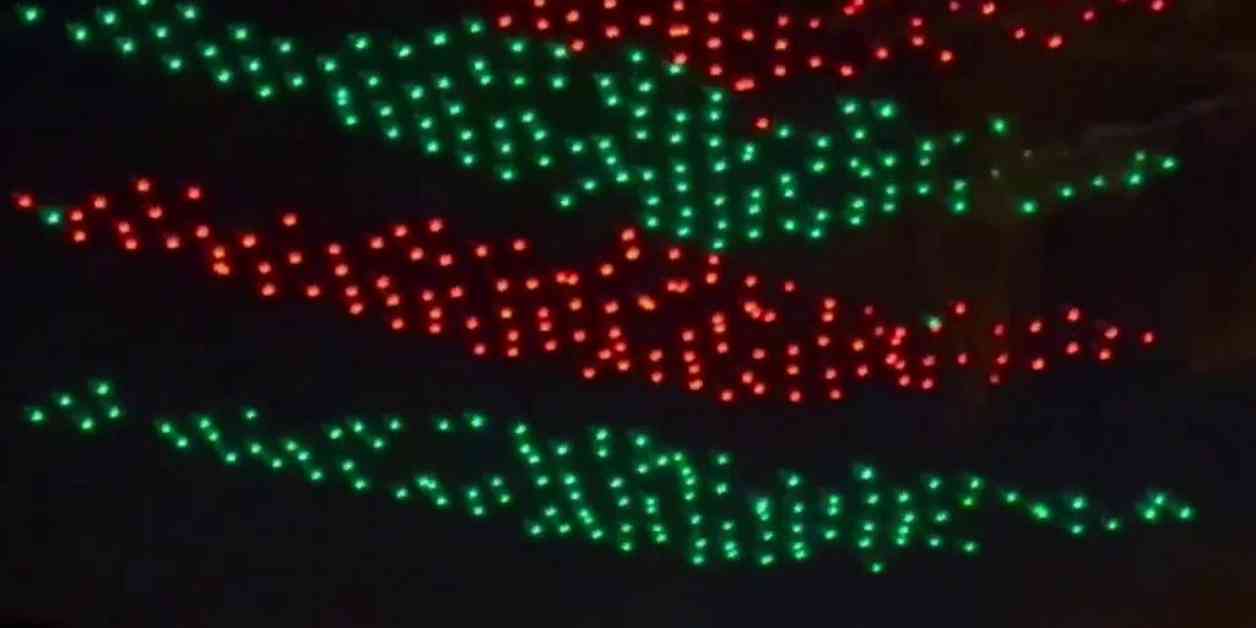Drone show accidents, while relatively infrequent, highlight critical safety concerns within the rapidly expanding world of drone technology. These incidents, ranging from minor malfunctions to catastrophic failures, underscore the need for robust safety regulations, advanced technology, and meticulous operator training. This analysis delves into the various factors contributing to such accidents, examining technological limitations, human error, environmental influences, and the crucial role of post-accident investigation and liability.
Drone show accidents, while rare, highlight the inherent risks involved in these spectacular displays. The potential for malfunction is ever-present, emphasizing the need for rigorous safety protocols. For instance, consider the planning involved in a successful event like those showcased at a florida drone show , where meticulous choreography and technical expertise are paramount to avoiding incidents.
Ultimately, preventing drone show accidents requires constant vigilance and advanced technological safeguards.
From understanding the different types of accidents—collisions, fires, loss of control—to exploring the preventative measures, safety protocols, and legal ramifications, we aim to provide a comprehensive overview of this important subject. We will also examine the impact of weather, environmental obstacles, and the role of human error, including pilot training and fatigue, in contributing to these incidents.
Drone Show Accidents: A Comprehensive Analysis
Drone shows, while spectacular, present inherent risks. Understanding the various factors contributing to accidents is crucial for improving safety protocols and minimizing future incidents. This analysis delves into the different types of accidents, safety regulations, technological vulnerabilities, human error, environmental influences, post-accident procedures, and insurance considerations within the context of drone show operations.
Drone show accidents, while rare, highlight the potential risks associated with large-scale drone operations. Understanding these risks is crucial, and recent incidents, such as the one detailed in this report on a florida drone accident , offer valuable insights. Analyzing these cases helps improve safety protocols and prevent future mishaps in drone shows and other applications.
Types of Drone Show Accidents

Drone show accidents can range from minor malfunctions to catastrophic events. Common causes include software glitches, GPS interference, battery failures, collisions, and loss of control. The severity of these accidents depends on factors such as the number of drones involved, the height of the flight, the location of the show, and the presence of bystanders. The following table categorizes various accident types.
| Accident Type | Cause | Severity | Prevention Measures |
|---|---|---|---|
| Collision | Software malfunction, GPS interference, pilot error | Low to high (depending on damage and potential injuries) | Redundant GPS systems, advanced collision avoidance systems, rigorous pilot training |
| Fire | Battery malfunction, short circuit | Medium to high (depending on fire spread and damage) | Use of certified batteries, regular battery maintenance, fire suppression systems |
| Malfunction | Software glitch, motor failure, communication loss | Low to medium (depending on the nature of the malfunction) | Regular software updates, rigorous pre-flight checks, redundant systems |
| Loss of Control | Pilot error, GPS signal loss, strong wind | Low to high (depending on the drone’s trajectory and environment) | Pilot training, redundant control systems, weather monitoring |
Safety Regulations and Protocols
International safety regulations for drone shows vary. Many countries require operator certification, pre-flight inspections, and adherence to specific airspace restrictions. Some countries have more stringent regulations than others, reflecting varying levels of technological advancement and risk assessment. A comprehensive pre-flight checklist is essential for minimizing accidents.
- Battery charge level verification
- Software version check and updates
- GPS signal strength assessment
- Motor and propeller inspection
- Communication system test
- Emergency procedures review
- Weather conditions assessment
- Airspace clearance confirmation
Effective communication and coordination among drone operators during a show are vital. Designated communication channels and clear roles for each operator should be established.
Technological Factors Contributing to Accidents
Technological failures, such as GPS signal loss, battery failure, and software glitches, are significant contributors to drone show accidents. Advancements in drone technology, such as improved GPS systems, more reliable batteries, and fail-safe mechanisms, can significantly enhance safety. Redundancy in critical systems is crucial.
The following flowchart illustrates a typical accident sequence due to a technological failure:
Software Glitch -> Loss of communication with drone -> Loss of control -> Drone descent/uncontrolled movement -> Potential collision/damage.
Human Error and its Impact, Drone show accident
Human error, encompassing pilot error, inadequate training, poor planning, fatigue, and stress, plays a substantial role in drone show accidents. Rigorous pilot training and certification programs are crucial. Methods to improve human-machine interaction include improved user interfaces and clear operational guidelines.
Drone show accidents, while thankfully rare, highlight the potential risks associated with unmanned aerial vehicles. The recent incidents underscore the need for robust safety protocols, a point emphasized by the scale and implications of events like the kazan drone attack , which involved a different, more malicious use of drones. Understanding the complexities of drone operation, from spectacular displays to targeted attacks, is crucial for preventing future mishaps.
Environmental Factors

Weather conditions and environmental obstacles significantly influence drone show safety. Strong winds, rain, fog, and proximity to buildings, trees, and power lines increase the likelihood of accidents. For instance, a drone show in a high-wind area might lead to loss of control, resulting in collisions or damage. A visual representation of this interplay would show drones navigating a space with various obstacles (buildings, trees) and weather elements (wind, rain) impacting their trajectory and stability.
Post-Accident Response and Investigation
Standard procedures for responding to a drone show accident involve securing the area, assessing injuries, and preserving evidence. Investigations involve data logging analysis from the drones, witness statements, and a review of pre-flight checklists. Key stakeholders include the drone operators, show organizers, emergency services, and regulatory authorities.
- Drone Operators
- Show Organizers
- Emergency Services
- Regulatory Authorities
- Insurance Providers
Insurance and Liability

Drone show operators should secure comprehensive insurance coverage to protect against potential liabilities. Legal liability for accidents can extend to organizers, operators, and even manufacturers. Risk management involves thorough planning, adherence to safety regulations, and appropriate insurance coverage.
Ultimately, preventing drone show accidents requires a multi-faceted approach. This includes stringent safety regulations, continuous technological advancements focusing on redundancy and fail-safe mechanisms, rigorous operator training, and proactive measures to mitigate the impact of environmental factors and human error. By understanding the complexities of these incidents and implementing comprehensive safety protocols, we can work towards a future where drone shows are both spectacular and safe.
Common Queries
What is the most common cause of drone show accidents?
While various factors contribute, human error (including inadequate training and poor planning) and technological failures (such as GPS issues or battery malfunctions) are frequently cited as leading causes.
What type of insurance is recommended for drone show operators?
Comprehensive liability insurance that covers property damage, injury, and potential legal costs is essential for drone show operators.
How are drone show accidents investigated?
Investigations typically involve reviewing flight data logs, interviewing witnesses, examining the damaged drones, and analyzing environmental factors to determine the root cause.
Are there international standards for drone show safety?
While there’s no single global standard, many countries are developing and implementing their own regulations based on best practices and risk assessments. These regulations often address aspects like pilot certification, pre-flight checks, and operational procedures.
